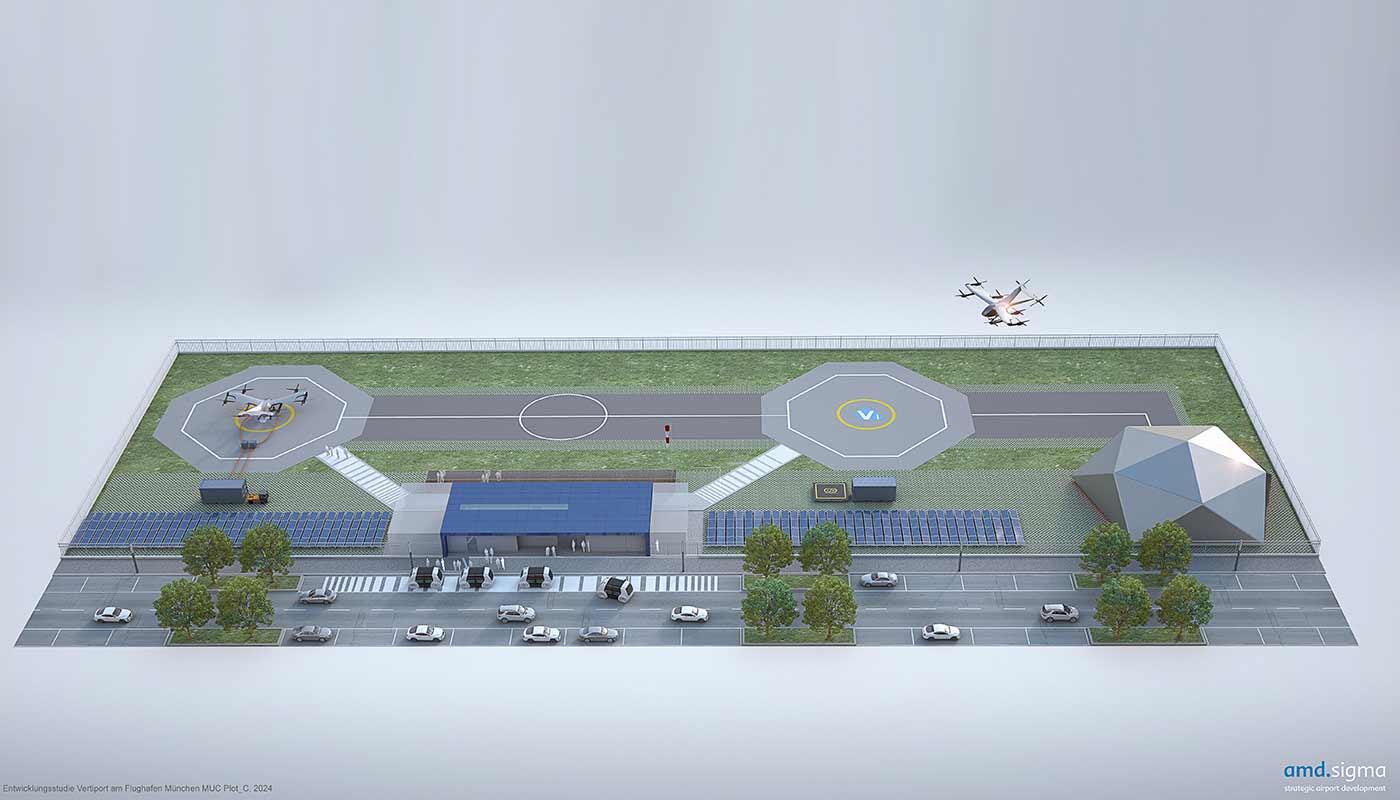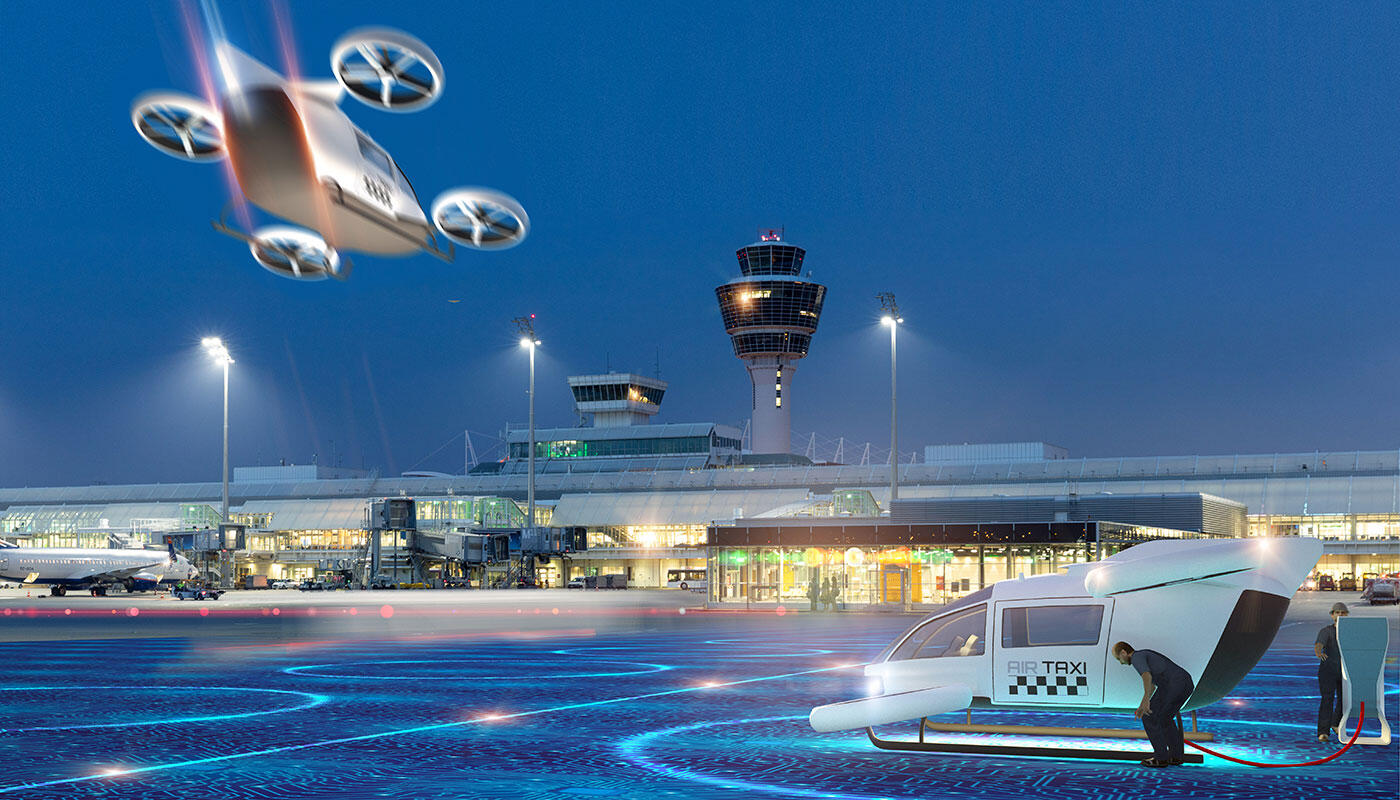AAM is a new frontier in transportation, offering a practical solution to the challenges of urban congestion. The concept of flying over traffic-clogged streets, once a distant dream, is now becoming a reality. Modern aircraft, often referred to as “air taxis,” are set to transport passengers and goods safely and efficiently across urban, regional, and rural landscapes. This innovation promises to connect airports with city centers and link remote regions with urban hubs, potentially transforming the current urban mobility landscape.
However, the successful implementation of AAM depends on the development of a robust and comprehensive ecosystem. In collaboration with our subsidiary amd.sigma Strategic Airport Development GmbH and other international partners, we are actively involved in developing this ecosystem globally.
AAM encompasses a new paradigm of mobility, including:




















